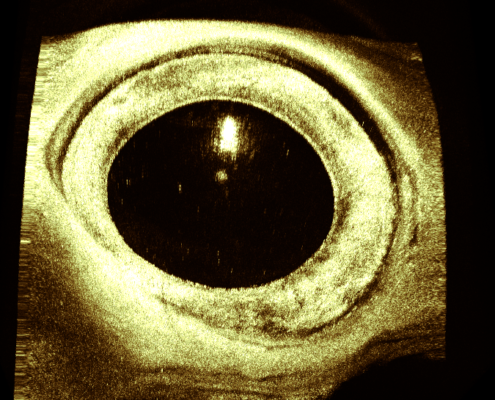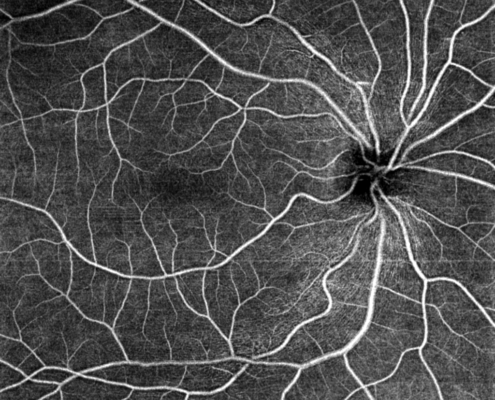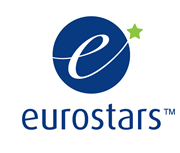Opthalmology
There are hundreds of millions of people around the world who are visually impaired. The occurrence of eye diseases increases with age and early diagnosis and follow-up treatment are crucial to prevent the progression of the disease. Non-invasive imaging using Optical Coherence Tomography (OCT) has had a major impact in preventing eye diseases turning into blindness.
Using the OCT technology, a cross-sectional view of the back of the eye, the retina, can be visualized together with a front view. The OCT technology has advanced to the present state where high-resolution cross-sectional images of the retina are possible and routinely used in the diagnosis and treatment of eye diseases such as macular degeneration (AMD). The most widely adopted OCT devices are SD-OCT devices based on super luminescent diodes (SLDs) and spectrometers operating at an axial scan rate of 70 kHz. SS-OCT with an axial scan rate from 100 up to above 1000 kHz has been shown to provide new clinical benefits to combat retinal diseases becoming increasingly prevalent with an aging society.
The whole eye can also be imaged using OCT technology, and especially the length of the eye is a key parameter in the selection of intraocular lens (IOL) for cataract surgery. Originally Optical Biometers used the first generation of TD-OCT to measure the axial length. The recent advances of SS-OCT enable full 3D scans of the eye with better accuracy in cataract surgery.
- Faster imaging speed enabling angiography (blood flow) imaging for diabetic retinopathy treatment
- Faster imaging speed for wide-field imaging to diagnose diabetic retinopathy earlier
- Longer imaging range for 3-D full eye biometry (eye geometry) for safer and more precise cataract surgery




